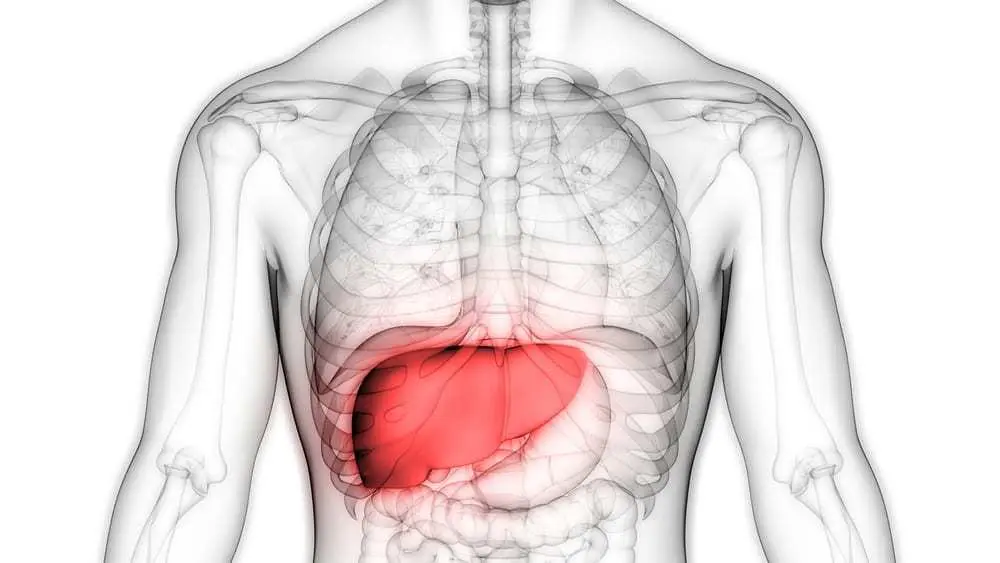Several conditions fall under the umbrella of nonalcoholic fatty liver disease (NAFLD), the most prevalent form of chronic liver disease in the United States, but all are characterized by an overabundance of fat in the liver cells. In addition, as you might surmise from the name, only people who drink a small amount of alcohol or abstain completely may be said to suffer from NAFLD. As fatty liver disease is becoming increasingly common in the Western world, it’s important to watch out for the signs and symptoms of NAFLD.

Types of NAFLD
Chances are someone you know has NAFLD; it affects between 30 and 40 percent of American adults. The two most common forms of NAFLD are simple fatty liver and NASH:
- Simple Fatty Liver: People who suffer from simple fatty liver – sometimes called nonalcoholic fatty liver, or NAFL – have excess fat in their liver but lack inflammation and cell damage. Because of this, simple fatty liver rarely causes liver damage or dangerous complications.
- NASH: Those suffering from nonalcoholic steatohepatitis (NASH), on the other hand, have a fatty liver, inflammation of the liver (also known as hepatitis), and liver cell damage. This condition can cause scarring of the liver, which is known as fibrosis in its first stage, and may lead to cirrhosis (more severe liver scarring) or liver cancer.
Caused by a buildup of fat in the liver, NAFLD is most often diagnosed in people who are overweight or obese. In its earliest stages, it typically doesn’t cause any harm, but it can lead to inflammation or scar tissue that prevent the liver from functioning properly. It may also result in liver cancer.
Dangerous conditions like fibrosis and cirrhosis don’t pop up overnight; they develop over years due to the accumulation of fatty deposits in the liver. To prevent NAFLD from worsening, it’s importance to detect NAFLD as soon as possible, get a diagnosis, and take steps to reduce the amount of fat in your liver.
Signs and Symptoms of NAFLD
NAFLD is a silent disease that rarely makes its presence known through signs and symptoms, especially in its earliest stages. There are only two common signs and symptoms of NAFLD: fatigue and pain or discomfort in the upper right abdomen (the location of the liver).
If NAFLD progresses to NASH and causes cirrhosis of the liver, you may notice one or more of the following symptoms:
- Bruising or bleeding easily
- Itchy skin
- Swelling in the legs
- Jaundice, or yellow discoloration in the skin and eyes
- Spider-like blood vessels
- Fluid accumulation in the abdomen
- Loss of appetite
- Nausea
- Confusion
- Drowsiness
- Slurred speech
If you notice any of these signs and symptoms of NAFLD, you may want to contact your doctor right away.
_____
Researchers are conducting new studies that explore the symptoms, risk factors, and prospective treatments of liver diseases like NAFLD and NASH. If you suffer from a fatty liver disease, you may consider getting involved in a clinical research study. Not only could you take part in pioneering research, but also you may help doctors and researchers improve health care for future generations.
QPS Missouri is looking for new participants. Since opening its doors in 1994, QPS Missouri has conducted over 1,000 FDA-regulated studies, paying out over $35 million to local participants. Your local participation could have a global impact, as QPS is an international leader in contract research with facilities in North America, Europe, and Asia. Our mission is to accelerate the development of drugs worldwide by enabling breakthroughs in pharmaceutical innovation. If you would like to join us in this mission, consider applying for a clinical research study.
To get started, you simply need to fill out an online application. Within 48 business hours, a recruiting coordinator will contact you for your pre-screening assessment. To learn more, please visit the QPS Missouri website, review the study participation process, or check out our list of FAQ.
